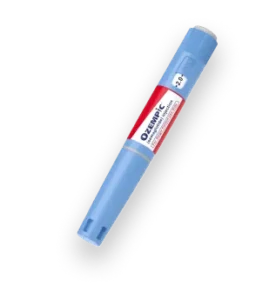Table of Contents
ToggleIntroduction:
Regarding weight loss, one of the most common questions people ask is: “How many calories should I eat to lose weight?” It’s a straightforward question, but the answer can be complex.
In this guide, we’ll break it down into simple terms to help you understand how calories work in your body. Plus, how to manage them to achieve your weight loss goals.
Understanding Calories
Calories are units of energy that our bodies use to perform everything. From basic functions like breathing to more complex tasks like exercising. When you consume more calories than your body needs, the excess is stored as fat.
Conversely, when you consume fewer calories than your body needs, your body burns stored fat for energy, leading to weight loss.
The Basic Calorie Formula
How Many Calories Should I Eat to Lose Weight?
To lose weight, you need to create a calorie deficit, which means consuming fewer calories than your body burns. A general rule of thumb is that a deficit of 3,500 calories equals about one pound of weight loss.
So, if you aim to lose one pound per week, you’d need to consume 500 fewer calories per day than your body needs. This formula, while simple, provides a guideline that can be adjusted based on individual needs and health considerations.
How Caloric Surplus Leads to Weight Gain
When you consume more calories than your body can use, the surplus is stored as fat. This is your body’s way of saving energy for future needs. However, persistent caloric surplus can lead to weight gain and associated health problems like obesity, diabetes, and heart disease.
Understanding this process is crucial for anyone looking to manage their weight. It’s not just about the number of calories but also about the quality of those calories. Consuming high-calorie, nutrient-poor foods can exacerbate weight gain and impact overall health negatively.
Why Caloric Deficit Works?
How Many Calories Should I Eat to Lose Weight?
The principle behind caloric deficit is fundamental to weight loss. When your body doesn’t receive enough calories from food, it starts to use stored energy from fat cells. Which is resulting in weight reduction.
This process helps you lose weight and makes your body better at using energy. Understanding this mechanism can empower you to make informed dietary choices.
Balancing Caloric Intake:
Creating a caloric deficit is important. However, it is also vital to eat enough nutrients. This helps your body work well. It’s not just about cutting calories but also about making sure those calories come from nutritious sources.
A balanced diet includes proteins, carbohydrates, fats, vitamins, and minerals. This diet helps your overall health and keeps your energy up while you lose weight.
Calculating Your Caloric Needs
To find out how many calories you need to lose weight, consider a few factors. These include your age, gender, weight, height, and activity level. Here’s a simple way to estimate your daily caloric needs:
Calculating Your Basal Metabolic Rate (BMR)
Your BMR is the number of calories your body needs when at rest. It helps maintain basic functions like breathing, circulation, and cell production. To estimate your BMR, you can use online calculators or apply formulas like the Harris-Benedict equation. Understanding your BMR is crucial because it forms the foundation of how many calories you should consume daily.
How to Calculate Your BMR?
To calculate your BMR, you can use the Harris-Benedict equation, which considers factors like age, gender, height, and weight. Here’s a simplified version:
- Men: BMR = 88.362 + (13.397 x weight in kg) + (4.799 x height in cm) – (5.677 x age in years)
- Women: BMR = 447.593 + (9.247 x weight in kg) + (3.098 x height in cm) – (4.330 x age in years)
Calculating your BMR gives you a basic number of calories. This is the amount needed to keep your current weight without exercise. This number is essential for developing a customized weight loss plan that suits your unique needs.
Factoring in Your Activity Level
How Many Calories Should I Eat to Lose Weight?
Once you’ve determined your BMR, the next step is to adjust for your activity level. Depending on how active you are, you’ll multiply your BMR by an activity factor.
This could range from sedentary (little to no exercise) to extra active (intense exercise or a physically demanding job). This change gives you a clearer view of your daily calorie needs. It helps you make a realistic weight loss plan.
Adjusting Caloric Needs to be Based on Activity Level
Your Total Daily Energy Expenditure (TDEE) is your BMR plus the calories you burn through physical activity. To calculate your TDEE, multiply your BMR by an activity factor:
- Sedentary (little or no exercise): BMR x 1.2
- Lightly active (light exercise/sports 1-3 days/week): BMR x 1.375
- Moderately active (moderate exercise/sports 3-5 days/week): BMR x 1.55
- Very active (hard exercise/sports 6-7 days a week): BMR x 1.725
- Super active (very hard exercise or a physical job): BMR x 1.9
Understanding your TDEE helps you determine how many calories you should consume daily to achieve your weight loss goals. It’s not only about eating fewer calories. It’s also about finding a balance that keeps your energy up and supports your health.
Importance of a Safe Caloric Deficit:
Creating a caloric deficit is the cornerstone of weight loss. However, it’s crucial to do so safely. A deficit of 500-1000 calories per day is generally considered safe and sustainable. That allows for gradual weight loss while minimizing the risk of nutritional deficiencies.
Quick weight loss can cause muscle loss, a slower metabolism, and other health problems. This makes it harder to keep the weight off in the long run. A moderate deficit supports weight loss while ensuring you get the nutrients necessary for good health.
Incorporating Fat-Burning Foods
How Many Calories Should I Eat to Lose Weight?
Eating the right foods can also help you burn more calories. While no food magically burns fat, some can boost your metabolism and help you feel full longer, preventing overeating. Here are a few fat-burning foods to consider:
Protein-Rich Foods
Protein requires more energy to digest compared to fats and carbohydrates, making it a powerful nutrient for weight loss. Foods like chicken, fish, eggs, and legumes are excellent sources of protein.
Incorporating these into your meals can help increase your metabolic rate. Plus, preserves muscle mass during weight loss, which is vital for maintaining long-term results.
Whole Grains
Whole grains like brown rice, oats, and quinoa are high in fiber, which can help you stay full longer and prevent overeating. They also require more energy to digest compared to refined grains.
By including whole grains in your diet, you not only support digestion but also maintain stable blood sugar levels. Which reduces the risk of cravings and binge eating.
Fruits and Vegetables
Fruits and vegetables are low in calories and high in water and fiber, making them great for weight loss. They fill you up without adding too many calories to your diet.
Additionally, their rich nutrient profile supports overall health. That provides essential vitamins and minerals that aid in bodily functions and enhance your weight loss efforts.
Healthy Fats
Foods high in healthy fats, like avocados, nuts, and olive oil, can help you feel full. This makes you less likely to grab unhealthy snacks. Including these in moderation can enhance the flavor of meals while supporting heart health.
Healthy fats also play a role in hormone regulation. Which is important for maintaining a balanced metabolism and effective weight management.
Tips for Successful Weight Loss
How Many Calories Should I Eat to Lose Weight?
Now that you know how many calories you should eat to lose weight, here are some tips to help you stay on track:
Monitoring Your Food Intake for Accountability
Keeping track of your food consumption can help you stay accountable and make healthier choices. Use apps or a food journal to record your daily meals and snacks. Monitoring your intake helps you identify patterns and make necessary adjustments.
It also provides insight into your eating habits, helping you understand triggers for overeating and areas for improvement. Being aware of what you consume is a powerful tool for managing calorie intake and achieving weight loss goals.
The Benefits of Meal Planning
Meal planning can prevent impulsive eating and help you stick to your calorie goals. Prepare healthy meals in advance to avoid reaching for high-calorie convenience foods. Planning ensures you have nutritious options available, reducing the likelihood of making unhealthy choices.
It also saves time and money, making it easier to maintain a balanced diet. By planning your meals, you can ensure a varied and nutrient-rich diet that supports your weight loss efforts.
Stay Hydrated
Drinking water can help you feel full and may reduce the number of calories you consume. Sometimes, thirst is mistaken for hunger, leading to unnecessary snacking.
Staying hydrated helps your body work well. It also helps control your appetite and supports weight loss.
Get Enough Sleep
Lack of sleep can affect hormones that regulate hunger, leading to increased appetite and cravings. Ensuring you get 7-9 hours of quality sleep per night supports metabolic processes and helps maintain energy levels. Rest is important for both your body and mind. It helps you stick to a healthy eating plan.
The Role of Physical Activity in Weight Management
Regular physical activity is a crucial component of weight loss. Aim for at least 150 minutes of moderate-intensity exercise per week, such as brisk walking, swimming, or cycling. Physical activity helps increase your TDEE, making it easier to create a caloric deficit.
It also offers numerous health benefits, including improved cardiovascular health, increased muscle mass, and enhanced mood. Combining exercise with a balanced diet optimizes weight loss and promotes overall well-being.
Be Patient and Consistent
Weight loss is a journey that requires patience and consistency. It’s important to set realistic goals and understand that progress may be slow at times. Remember, the key is to create a sustainable lifestyle change that you can maintain in the long term. Celebrate small victories along the way and stay focused on the bigger picture.
Setting Realistic Goals
Establishing achievable weight loss goals sets the foundation for success. Rather than aiming for rapid weight loss, focus on gradual changes that promote sustainable habits. By setting realistic targets, you reduce the risk of disappointment and increase the likelihood of maintaining motivation and commitment.
Embracing Lifestyle Changes
How Many Calories Should I Eat to Lose Weight?
Successful weight loss involves more than just diet and exercise; it requires a holistic approach to lifestyle. Embrace changes that promote well-being, such as stress management, social support, and mindful eating. These factors play a significant role in maintaining a healthy weight and improving overall quality of life.
Tracking Progress
Monitoring your progress helps keep you motivated and accountable. You can track your progress by weighing yourself, measuring body fat, or noting fitness goals. This evidence can help you stay motivated and encourage good habits. Adjust your strategy as needed and remember that consistency is key to long-term success.
In conclusion, understanding how many calories you should eat to lose weight is crucial for reaching your goals. By calculating your caloric needs and incorporating healthy habits, you can create a calorie deficit and achieve weight loss. Remember to incorporate fat-burning foods, stay active, and be patient with yourself. Happy weight loss journey!
Understanding Plateaus
It’s common to experience weight loss plateaus, where your progress stalls. This can happen because your body adapts to your new diet and exercise routine. To overcome a plateau, try adjusting your calorie intake, changing your exercise routine, or incorporating more strength training.
Why Weight Loss Plateaus Occur?
Weight loss plateaus occur when your body adapts to your diet and exercise routine, slowing your progress. As you lose weight, your body needs fewer calories. Your metabolism may slow down too. This can make it harder to keep losing weight.
Plateaus are a natural part of the weight loss journey and should not be viewed as failures. Understanding why plateaus happen can help you develop strategies to overcome them and continue progressing toward your goals.
Strategies to Overcome Plateaus
To overcome a plateau, consider adjusting your calorie intake or changing your exercise routine. Increasing the intensity or duration of your workouts can help break through a plateau. Incorporating more strength training can boost metabolism and promote fat loss.
Additionally, reevaluating your caloric needs and making small dietary adjustments can help jumpstart weight loss. Staying flexible and open to change is key to overcoming plateaus and continuing to make progress.
The Importance of Patience and Persistence
How Many Calories Should I Eat to Lose Weight?
Patience and persistence are essential when dealing with weight loss plateaus. It’s important to remember that plateaus are temporary and can be overcome with time and effort. Staying committed to your goals and maintaining healthy habits will ultimately lead to success.
Focus on the positive changes you’ve made and the progress you’ve achieved, even if the scale isn’t moving. Consistency and perseverance are the keys to long-term weight loss and overall health improvement.
Conclusion
To lose weight, you need to know how many calories your body needs. This means creating a calorie deficit that you can maintain. By incorporating fat-burning foods and following practical tips for calorie management, you can achieve your weight loss goals. Remember, consistency and patience are key to long-term success. Stay committed, and you’ll see the results you’re striving for.
Embracing a Holistic Approach to Weight Loss
Weight loss is not just about calorie counting. It’s about adopting a holistic approach that includes a balanced diet, regular exercise, and lifestyle changes. Focusing on overall well-being rather than just the number on the scale. That can lead to more sustainable and fulfilling results. Embrace the journey as an opportunity to improve your health and build habits that support long-term success.
Celebrating Small Victories and Milestones
Along your weight loss journey, celebrate small victories and milestones. Recognizing and rewarding your progress helps maintain motivation and reinforces healthy habits. Whether it’s fitting into an old pair of jeans, reaching a fitness goal, or simply feeling more energetic.
The necessity to acknowledge these achievements boosts confidence and encourages continued effort. Celebrate each step forward and use it as fuel to keep moving toward your ultimate goals.
The Power of Community and Support
Having a support system can significantly impact your weight loss journey. Surround yourself with friends, family, or support groups that encourage and motivate you. Sharing experiences and challenges with others can provide valuable insights and accountability.
Remember, you’re not alone on this journey, and having people who support your goals can make a world of difference. Embrace the power of community and draw strength from those around you.
The Best Prescription Weight Loss Supplement:

GLP-1: Semaglutide for Weight Loss
Semaglutide mimics a gut hormone called GLP-1 (glucagon-like peptide-1). When you eat, GLP-1 slows digestion and helps you feel full. It also:
- Has the same active ingredient as Ozempic® and Wegovy®.
- Is clinically proven to help lose 15-20% of body weight.

Ozempic® for Weight Loss
Ozempic® mimics a gut hormone called GLP-1 (glucagon-like peptide-1). When you eat, GLP-1 slows digestion and helps you feel full. It also:
- Enhances the body’s response to sugars
- Is clinically proven to help lose 15-20% of body weight.

Mounjaro for Weight Loss
Mounjaro mimics a gut hormone called GLP-1 (glucagon-like peptide-1). When you eat, GLP-1 slows digestion and helps you feel full. It also:
- Balances blood sugar, reduces appetite & regulates insulin
- Is clinically proven to help lose 15-20% of body weight.

Metformin for Weight Loss
Metformin works by improving insulin sensitivity and aiding in weight loss by reducing your appetite. It also:
- Promotes weight loss by regulating the body’s response to insulin
- Reduces appetite and controls cravings

Biocare: GLP-1 Helper!
Biocare Nutrition offers a range of dietary beverages specifically formulated for individuals using GLP-1 medications, such as semaglutide and tirzepatide. Each serving provides 30 grams of high-quality protein. That helps preserve lean muscle mass, along with essential vitamins and minerals to prevent nutrient deficiencies.
The proprietary blend includes digestive enzymes, probiotics, prebiotic fiber, and bioactive compounds. All designed to alleviate common side effects associated with GLP-1 medications, such as nausea, bloating, constipation, and diarrhea.
The Best OTC Weight Loss Supplement:

Synogut:
Unlock your digestive health with our all-natural formula, crafted to keep you energized and thriving!

LeanBiome
Leanbiome Pills are made with natural ingredients. They are also free from harmful additives and preservatives.
Affiliate Disclosure:
The links contained in this product review may result in a small commission. This goes towards supporting our research and editorial team and please know we only recommend high-quality products.
Note: This article is for informational purposes only and is not intended to diagnose, treat, or cure any disease. Always consult a healthcare professional before taking any supplement or making any changes to your diet or lifestyle.




